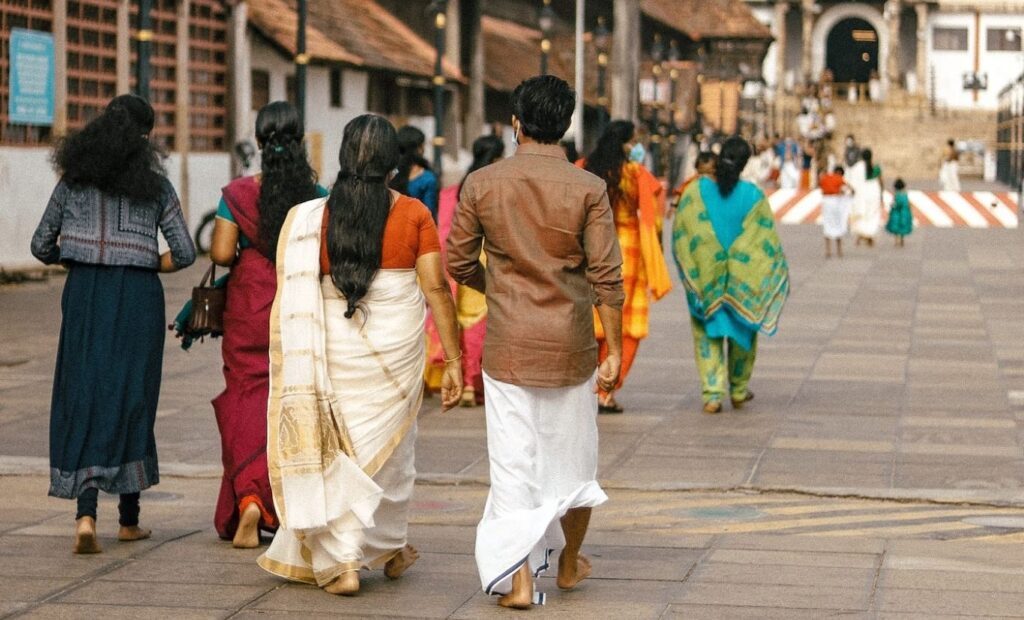The Science Behind Walking Barefoot in Temples: How It Recharges Your Energy

The Science Behind Walking Barefoot in Temples: How It Recharges Your Energy ( Representational image )
Walking barefoot in temples is a time-honored tradition in many cultures, particularly in India. While it is often associated with religious devotion and respect for sacred spaces, modern science has begun to uncover the physiological and psychological benefits of this practice. From enhancing energy flow to improving well-being, walking barefoot on temple floors is more than just a ritual—it is a scientifically backed way to rejuvenate the body and mind.
The Science Behind Barefoot Walking
The human foot has over 200,000 nerve endings, making it one of the most sensitive parts of the body. Walking barefoot stimulates these nerve endings, activating vital pressure points that are linked to various organs and systems in the body. This stimulation is similar to acupressure, which helps improve circulation, balance energy flow, and enhance overall health.
1. The Concept of ‘Earthing’
Walking barefoot, especially on natural surfaces like stone or marble, connects the body to the earth’s natural energy. This process, known as ‘earthing’ or ‘grounding,’ allows the body to absorb negatively charged electrons from the ground, which have been shown to:
- Reduce inflammation by neutralizing free radicals.
- Lower stress and anxiety by balancing cortisol levels.
- Enhance sleep quality by regulating the body’s circadian rhythm.
- Improve blood circulation and reduce the risk of cardiovascular diseases.
Many ancient temples were built with materials that naturally facilitate grounding, such as granite, marble, or sandstone. These surfaces retain and radiate energy, amplifying the benefits of barefoot walking.
2. Activation of Pressure Points
According to Ayurveda and acupressure principles, the soles of our feet have reflex points corresponding to different organs. Walking barefoot in a temple, especially on uneven or cool stone surfaces, stimulates these pressure points, leading to:
- Better digestion through activation of the stomach and liver points.
- Enhanced brain function by stimulating the reflex points linked to the nervous system.
- Detoxification of the body through improved circulation and lymphatic drainage.
This practice helps maintain balance in the body’s energy system, promoting both physical and mental well-being.
Spiritual and Psychological Benefits
Apart from the scientific reasons, walking barefoot in a temple is deeply connected to spiritual and mental health.
1. Promotes Mindfulness and Inner Peace
Temples are designed to be places of serenity and contemplation. Removing footwear before entering creates an immediate sense of humility and connection with the divine. The cool, smooth surfaces of temple floors provide a calming effect, enhancing focus and mindfulness. This state of heightened awareness allows devotees to immerse themselves in prayers and rituals with greater sincerity.
2. Respect and Humility
Walking barefoot is an act of respect toward the sacredness of the temple. Many religious traditions emphasize that the feet should be pure before entering a holy space. In Hinduism, for example, it is believed that shoes carry impurities from the outside world, and removing them symbolizes leaving behind material concerns.
3. Reduction of Mental Stress
The combination of earthing, temple architecture, and spiritual ambiance creates a unique environment that reduces stress and anxiety. Studies suggest that exposure to sacred or meditative spaces significantly lowers cortisol (the stress hormone) levels, promoting a state of relaxation and mental clarity.
Why Are Temples Designed for Barefoot Walking?
Ancient temple architects were highly knowledgeable about the effects of materials and energy flow. Some key design elements that enhance the benefits of walking barefoot in temples include:
- Stone Flooring: Most temples have floors made of granite, marble, or sandstone, which retain natural energy and have cooling properties.
- Energy Centers: Many temples are built at locations considered to be high-energy spots, such as near rivers, mountains, or magnetic fields. Walking barefoot in such areas amplifies energy absorption.
- Hygiene and Purity: Traditional temple maintenance ensures that the floors remain clean and free from contaminants, making barefoot walking safe.
Conclusion
Walking barefoot in temples is more than just a cultural or religious practice—it is a scientifically supported method of enhancing physical, mental, and spiritual well-being. Whether through improved circulation, stress reduction, or mindfulness, this ancient tradition continues to benefit millions. As modern science explores the benefits of grounding and energy balance, it reaffirms the wisdom behind this sacred practice.












